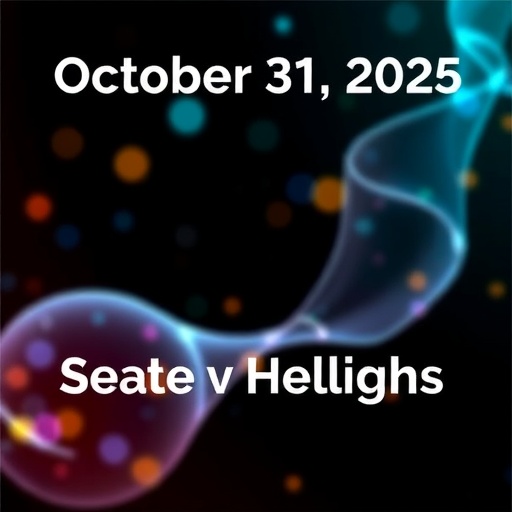A groundbreaking new study, spearheaded by experts from Weill Cornell Medicine, University Hospitals Cleveland, and Case Western Reserve University, challenges longstanding assumptions about the generally perceived low risk associated with Grade Group one (GG1) prostate cancer. Traditionally regarded as indolent and unlikely to progress, GG1 prostate cancer is often managed conservatively, relying heavily on biopsy results to guide this approach. However, this comprehensive investigation reveals that biopsy grading alone presents a dangerously incomplete picture, potentially understating the aggressiveness of some tumors.
The research, recently published in the prestigious journal JAMA Oncology, elucidates that approximately one in six men diagnosed with GG1 prostate cancer may, in fact, harbor intermediate- or high-risk disease once additional clinical data is considered. The implications of these findings are profound. The reliance on biopsy samples, which only analyze limited sections of the prostate tissue, can significantly underestimate the tumor’s true biological behavior. This underestimation leads clinicians to misclassify patients, which may result in delayed intervention or inappropriate treatment plans and ultimately poorer clinical outcomes.
Crucially, the study leverages a robust dataset gleaned from the National Cancer Institute’s Surveillance, Epidemiology, and End Results (SEER) Program, encompassing nearly a decade of data between 2010 and 2020. This extensive dataset included about 300,000 men diagnosed with prostate cancer localized to the gland, among whom roughly 117,000 received GG1 classifications based solely on biopsy. Such real-world, population-wide data affords an unparalleled view into diagnostic trends and outcomes, confirming the necessity of integrating multifaceted clinical parameters beyond pathology grades.
.adsslot_CjikT0oP4q{ width:728px !important; height:90px !important; }
@media (max-width:1199px) { .adsslot_CjikT0oP4q{ width:468px !important; height:60px !important; } }
@media (max-width:767px) { .adsslot_CjikT0oP4q{ width:320px !important; height:50px !important; } }
ADVERTISEMENT
One of the central clinical tools evaluated alongside biopsy grade was serum prostate-specific antigen (PSA) levels, a protein biomarker intimately tied to prostate cancer activity. Elevated PSA levels, often reflective of tumor burden or aggressive disease, when cross-examined with biopsy results and tumor size, unveiled that more than 18,000 men initially labeled with low-risk GG1 cancer actually presented with higher-risk profiles. These cases arguably warranted more definitive treatments such as radiation therapy or radical prostatectomy, contrasting sharply with the standard active surveillance protocols recommended for low-grade disease.
Active surveillance, while a valuable strategy to avoid overtreatment and maintain quality of life, assumes the tumor will behave indolently—a premise now challenged by this study’s findings. Dr. Bashir Al Hussein, co-senior author and assistant professor at Weill Cornell Medicine, highlights a critical concern: “Our data show that up to 30 percent of GG1 patients who fall into higher-risk categories underwent active surveillance, exposing them to the risk of undertreatment.” This statistic underscores the urgent need to refine risk stratification methodologies to prevent potentially avoidable cancer progression.
The study’s revelations arrive amid ongoing debates about the nomenclature applied to GG1 prostate cancer. Some clinicians have proposed removing the “cancer” label from GG1 tumors in an effort to reduce patient anxiety and circumvent unnecessary interventions. However, this new research cautions against such blanket policy changes. As Dr. Jonathan Shoag from Case Western Reserve University explains, conflating biopsy-based GG1 results with post-prostatectomy grading creates a false equivalency, which could dangerously downplay the risks inherent in some cases initially identified as low grade.
Expanding on this nuance, Dr. Shoag points out that the biological heterogeneity of GG1 tumors means that not all such cancers share similar clinical trajectories. While many indeed progress slowly and remain localized, a subset displays adverse clinical features predictive of worse outcomes. Identifying these patients early is paramount to optimizing their prognosis. The authors stress that precision in risk classification is not merely academic; it translates directly into life-altering decisions about surveillance versus intervention.
The study also highlights technological limitations inherent to biopsies, which sample only focal areas of the prostate rather than offering a panoramic assessment of the entire gland. This sampling bias can lead to missed detection of more aggressive cancer zones, which are subsequently revealed only through whole-organ examination after prostatectomy. Consequently, reliance on biopsy grading alone without coupling it with clinical findings such as PSA kinetics or tumor volume risks significant underestimation, necessitating a paradigm shift in diagnostic algorithms.
As the understanding of GG1 prostate cancer biology evolves, the researchers advocate for patient counseling protocols that transparently communicate the risk spectrum, empowering men to make informed treatment choices. Dr. Neal Arvind Patel, the study’s first author, accentuates the need for ongoing research into the molecular and clinical characteristics underpinning the subset of GG1 tumors linked with adverse outcomes. Such insights could pave the way for novel prognostic markers and tailored therapeutic approaches that balance safety and efficacy.
In clinical practice, this means a patient diagnosed with GG1 prostate cancer cannot be universally assumed to need only active surveillance. Instead, a holistic assessment encompassing biopsy grade, PSA levels, tumor metrics, and possibly emerging molecular signatures should inform the therapeutic roadmap. This integrative approach holds promise for reducing both undertreatment and overtreatment, ultimately improving survival rates and quality of life for patients with prostate cancer.
Moreover, the findings call for caution in the rising trend towards de-labeling low-grade prostate tumors as “non-cancerous.” While psychological benefits are evident in easing patient anxiety, the medical community must weigh this against the possibility of missing early signs of aggressive disease in a notable subset. Until further advances provide clearer risk stratification tools, a one-size-fits-all rebranding remains ill-advised.
In sum, this seminal analysis underscores that despite advances in prostate cancer diagnostics and management, Grade Group one prostate cancer is not a monolithic entity. The heterogeneity within this group demands nuanced interpretation and personalized care. Physicians must articulate these complexities effectively to patients, ensuring that decisions about surveillance or intervention are grounded in comprehensive, multidisciplinary evidence rather than reliance on biopsy grade alone. The study marks a pivotal moment in prostate cancer research, steering the field towards greater precision medicine and ultimately better patient outcomes.
Subject of Research: Prostate Cancer Risk Assessment and Classification of Grade Group one (GG1) Prostate Tumors
Article Title: New Evidence Challenges Low-Risk Label of Grade Group One Prostate Cancer, Revealing Hidden Aggressiveness
News Publication Date: 31-Jul-2025
Web References:
https://vivo.weill.cornell.edu/display/cwid-baa2012
https://case.edu/cancer/members/member-directory/jonathan-shoag
https://vivo.weill.cornell.edu/display/cwid-nap9055
https://seer.cancer.gov/
https://ascopubs.org/doi/10.1200/JCO.22.00123
References:
Published in JAMA Oncology, July 31, 2025
Keywords: Prostate cancer, Grade Group one, GG1 tumors, biopsy limitations, prostate-specific antigen (PSA), active surveillance, cancer risk classification, prostatectomy, cancer nomenclature, clinical outcomes, radical prostatectomy, radiation therapy
Tags: biopsy grading limitationscancer treatment decision-makingclinical implications of prostate cancerGrade Group one prostate cancerhigh-risk prostate cancerintermediate-risk prostate cancerJAMA Oncology studylow-grade prostate cancer risksprostate cancer management strategiesprostate cancer progressionSEER Program datasetWeill Cornell Medicine research






